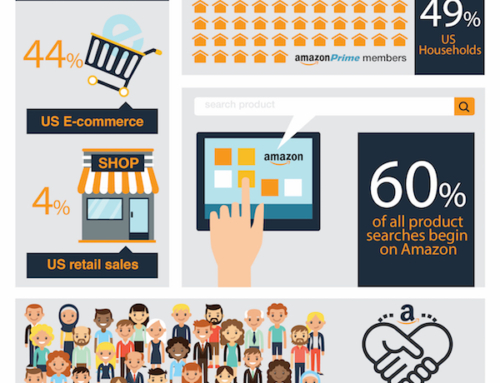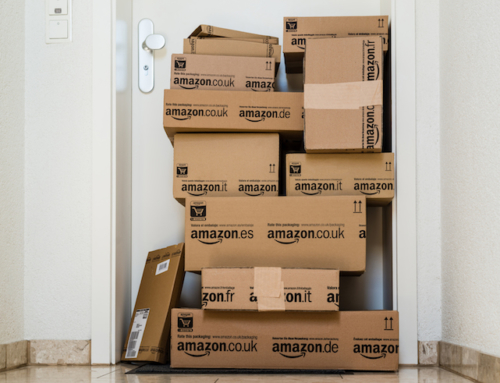Selling on Amazon is hard work.
Undeniably, selling on Amazon is hard work. Don’t let anyone tell you its easy. The road to success is fraught with hurdles and complexities. From securing a spot on the coveted Page 1 to dealing with the intricacies of language localization, the path is anything but straightforward. However, these very challenges separate the extraordinary sellers from the ordinary.
The Challenges of Amazon Selling
The world of Amazon selling is riddled with numerous obstacles—ranging from the saturation of brands from China to the constant need to adapt to ever-changing rules. The pressure from copycats, the battle against fake reviews, and the struggle for trademark protection – all contribute to the complexity of the platform. Prepare yourself because selling on Amazon is hard work.
The challenges extend to sourcing, brand gating, creating 3D renderings, and driving traffic from outside sources. Not to mention the pursuit of the Best Seller Badge, adherence to Amazon’s Terms of Service (TOS), and dealing with the inflation of Pay-Per-Click (PPC) costs.
Furthermore, building a team, managing category saturation, acting as a middleman, handling A-to-Z Guarantee claims, and balancing inventory are all demanding tasks. Add to this the necessity of contending with long lead times, building a competitive advantage (or ‘moat’), dealing with uneven US tax regulation, ensuring profitability, and optimizing prices – it’s clear that Amazon selling is hard work.
The Numbers Behind Amazon Private Label Selling
To give you an idea of the competition in this space, let’s delve into some statistics:
Total Private Label Amazon Sellers: 1.5 million
Private Label Sellers earning more than $50k: 750,000
Private Label Sellers earning more than $100k: 112,000
Private Label Sellers earning more than $500k: 38,000 (2.5% of all sellers)
To be among the top 2.5%, you need to outperform your competitors by a significant margin. You need to master at least 70% of the challenges listed above. It’s a tall order, but it’s what separates the world-class sellers from the rest.
Most Private Lable Brand FBA sellers are faced with these embedded costs.
Amazon Listing Fee – 15% of sales
Amazon FBA Fee – 15% of sales
Amazon advertising spend – 15-30% of sales
I recommend having a product cost between 10 and 30% of sales.
The Road to World-Class Amazon Selling
Being a world-class seller on Amazon is not about luck. It demands relentless hard work, grit, disciplined strategy, and a willingness to shed blood, sweat, and tears. It’s about juggling and mastering the complexities of selling on this platform.
No YouTube course, MBA program, Facebook group, or Standard Operating Procedure (SOP) can fully prepare you for this journey. It’s a path filled with challenges, but these challenges make the journey worthwhile.
Here’s to embracing and overcoming the complexities of Amazon selling. Because, in the end, selling on Amazon is hard work.
Selling on Amazon is hard work to get your product on Page 1 of search.
In the world of e-commerce, landing your product on Amazon’s Page 1 is the ultimate goal. But as anyone who has attempted it will tell you, it’s no easy feat. With millions of products vying for attention, how can you ensure that yours stands out? One approach is to utilize Amazon’s algorithm to your advantage by optimizing your product listing with relevant keywords, high-quality images, and persuasive copy.
Another critical factor is customer reviews, which can make or break your chances of reaching that coveted first page. While the journey to Page 1 may be challenging, the rewards are well worth it: increased visibility, higher sales, and the opportunity to reach a wider audience. So don’t give up on your dreams of Page 1 success – with persistence, patience, and a little know-how, you can get there!
Selling on Amazon is hard work to fight copycats products.
Once your brand begins to see success, you will start to see copycats coming listing products similar to yours. They are trying to draft off your success. It takes work to stand out in a sea of competitors, especially when dealing with copycats trying to mimic your products. The truth is that copycats are a pain. You put so much time and effort into researching and designing your product, only to have someone replicate it and undercut your prices.
It can be frustrating, but it’s important to stay vigilant and take necessary action to protect your business. You can overcome these challenges and succeed in Amazon selling with the right strategy and mindset. Like we have said, selling on Amazon is hard work.
Trademark protection is hard work.
For those in the business of selling goods on Amazon, trademark protection is necessary for anyone building a private label brand. With so many sellers vying for the same customer base, it can take time to differentiate your products. Add to this the challenge of protecting your brand identity from copycats and imitators, which can seem daunting. The good news is that there are strategies for achieving trademark protection that can help keep your business on track and thriving.
Whether you are just starting or have been selling on Amazon for years, navigating the complexities of trademark law is a necessary step in securing the longevity of your business. Get a trademark lawyer to file the appropriate forms. Learn more at USPTO.gov
Selling on Amazon is hard work to battling fake reviews.
As an Amazon seller, battling fake reviews can be an uphill struggle. It’s disheartening when customers leave fake reviews on your products without using them. As a result, it becomes harder to distinguish what reviews are genuine and what’s not. Customers rely heavily on reviews when it comes to deciding whether or not to purchase a product. Unfortunately, some sellers resort to purchasing fake reviews to increase their sales.
The sad reality is that buying fake reviews is too easy, making it difficult for honest sellers to compete. Nonetheless, if you’re an honest seller, the best thing you can do is report fake reviews to Amazon and let them handle it accordingly. Selling on Amazon is hard work and it takes dedication.
Adapting to Amazon’s constant rule-changing is hard work.
Selling on Amazon can be a game changer for small business owners, but it’s no secret that the platform operates under strict rules and regulations. One such set of rules that can be particularly difficult to adhere to is managing your account health. This policy requires sellers to consistently maintain a high level of performance across six key metrics, including order defect rate and late shipment rate. While the rule exists to promote a positive customer experience, it can take time for sellers to stay on top of it. Adapting to this rule and the ever-changing landscape of Amazon selling is no small feat, but the reward can be tremendous for those who can do so successfully.
Product sourcing is hard work.
As an Amazon seller, you likely understand the struggle of sourcing products. The process can be tough, time-consuming, and requires a lot of effort to find products that will sell well on the marketplace. After all, everyone wants a piece of the Amazon pie, making competition fierce. But don’t get discouraged – with the right strategies and tools, you can master the art of sourcing. From building relationships with suppliers to utilizing online marketplaces and trade shows, there are many ways to find the best products for your business. Keep pushing forward, and you’ll see the rewards of your hard work pay off in your successful Amazon selling journey.
Selling on Amazon is hard work to get your Brand gated.
Selling on Amazon is hard work and can be a lucrative business venture, but there are challenges along the way. One of these challenges is brand gating, which can be difficult to navigate. Brand gating means Amazon restricts who can sell a particular brand on their platform. Private-label brand sellers want to get their brands gated. Gating your brand prevents copycat and knockoff brands from capitalizing on your hard work. This also prevents them from selling on your pages. As tough as it may be, Amazon sellers must stay persistent and informed about the brand-gating process to succeed in their online business.
Video and 3D rendering creation is hard work.
Creating 3D renderings can be daunting for even the most experienced designers, but with 9-3D renderings, the process becomes even more challenging. The learning curve can be steep, from choosing the right software to mastering complex techniques. However, the rewards can be tremendous, especially for increased sales. For example, Amazon sellers can use 3D renderings to showcase their products visually compellingly, making it easier for customers to picture themselves using the item. By investing time and effort into achieving high-quality 3D renderings, sellers can set themselves apart from the competition and drive more sales.
Amazon selling is hard work to get outside traffic.
When it comes to selling on Amazon, one of the biggest struggles sellers have is driving outside traffic to their products. While the online marketplace provides a highly visible platform, the sheer amount of competition can make it difficult to stand out. Additionally, Amazon’s algorithm favors already popular products, so it can take time for newer sellers to gain traction. However, strategic marketing and creativity can attract buyers outside Amazon and boost sales. From social media campaigns to influencer partnerships, there are various tactics sellers can employ to drive traffic to their Amazon listings and increase their chances of success.
Amazon selling is hard work to get the Best Seller Badge.
Achieving the coveted Best Seller Badge on Amazon is no easy feat. As an Amazon seller, you’ll need a strong understanding of the platform and its algorithms and a well-executed marketing strategy. With millions of products on Amazon, competition can be fierce, making it all the more difficult to stand out. Even after investing time and effort into optimizing your listings, researching and targeting the right keywords, and running successful advertising campaigns, there’s no guarantee of reaching this prestigious milestone. So, if you’re an Amazon seller with your sights set on the Best Seller Badge, brace yourself for a challenging but ultimately rewarding journey.
Controlling PPC cost increases is hard work.
Navigating the world of Amazon selling can be a daunting task, especially when it comes to dealing with PPC inflation. This phenomenon can wreak havoc on a seller’s advertising budget, making it easier to stay competitive with going over budget. However, with the right strategies in place and a thorough understanding of the ins and outs of PPC advertising, it is possible to succeed in this competitive and ever-changing landscape. By carefully monitoring your campaigns and adjusting your bidding strategy as needed, you can stay ahead of the curve and ensure that your Amazon business remains profitable despite the challenges of inflation.
Amazon selling is hard work to maintain margins.
When it comes to selling on Amazon, maintaining margins can be challenging for any seller. With the constant changes in fees and the fierce competition, it can be hard to keep up, let alone make a profit. However, it’s important to remember that there are strategies you can implement to help maintain your margins. Working closely with your manufacturer and other supply chain partners to keep costs down, managing your inventory levels, and managing retail pricing are some ways to maintain your margins. Additionally, staying updated on the latest trends and changes in Amazon’s policies can give you an edge. Selling on Amazon is hard work and maintaining margins is possible with the right mindset and tactics.
Building a high-performing team is hard work.
Building a team is no easy feat, especially in the competitive world of Amazon selling. This digital marketplace constantly evolves and requires a dynamic and dedicated team to stay ahead of the curve. From sourcing the best products to optimizing listing descriptions and managing inventory, the demands of Amazon selling can be overwhelming for just one person.
That’s why building a team is crucial to success. However, it’s not just about finding any group of individuals to fill positions – it’s about creating a team of skilled and passionate experts who can work cohesively towards a shared goal. It may be a difficult process, but the payoff is invaluable. With the right team, you’ll be well on your way to achieving Amazon selling success.
Category saturation is hard.
For anyone who has tried to sell on Amazon, the concept of category saturation is all too familiar. It’s challenging to stand out from the competition when you’re limited to just a handful of categories. With so many sellers vying for the same customers and the same space on Amazon’s virtual shelves, carving out a niche can feel like an uphill battle. Even seemingly unique products can end up lost in the sea of options available on the platform.
Selling on Amazon is hard work but remains a lucrative opportunity for those willing to put in the time and effort. So, aspiring entrepreneurs shouldn’t be intimidated by the category saturation and can still make Amazon selling work by focusing on market analysis, tweaking listing and price, and diversifying their product lines.
Managing A-to-Z Guarantee claims is hard work.
Selling on Amazon can be a lucrative venture for entrepreneurs across the globe. However, the process can be daunting at times, especially when navigating the A-to-Z Guarantee claims. This program is designed to protect buyers, but it can cause some headaches for sellers handling claims and refund requests. Sometimes, the customer is not right. Yet Amazon always sides with the customer.
Fighting these claims is a process. The process is complicated, time-consuming, and challenging because selling on Amazon is hard work. Fortunately, by taking the time to understand the ins and outs of the program and seeking out expert advice, you can streamline the process and ensure that your Amazon selling experience remains fruitful and profitable. Sometimes, you have to accept the fact that, in Amazon’s eyes, the customer is not always right, but they are always the customer.
Language localization is hard work.
The language localization issue becomes more pressing as Amazon expands its reach to various countries. Ensuring their platform is accessible to a global audience means private label brand sellers are responsible for translating product descriptions, understanding cultural nuances, and ensuring everything is tailored to the local market. With 17 different languages to navigate, this task is no easy feat. The output language code, EN-US, is just one small piece of the puzzle. Developing a seamless, successful approach to selling on Amazon across multiple regions requires dedication, expertise, and a willingness to adapt. Only then can businesses truly thrive in a global marketplace.
Inventory balancing is hard work.
If you’re an Amazon seller, you know the struggle of inventory balancing all too well. Keeping up with demand while avoiding overstock can feel like a never-ending battle. And with the stakes so high in the competitive world of online retail, there needs to be more room for error. As a seller, your reputation rests on your ability to deliver products in a timely, efficient manner. It’s a delicate balancing act, but the rewards can be significant. With the right approach and tools, you can stay on top of your inventory and keep your business thriving.
Managing long lead times in the supply chain is hard work.
For anyone looking to become a successful Amazon seller, one of the biggest challenges is dealing with long lead times. Waiting anywhere from a few weeks to a few months to replenish products can frustrate you and potential customers. It is vital to have a system to keep in contact with your supply chain partners. You need to have the correct inventory management automation systems to help you.
Additionally, consider diversifying your product offerings to include items with shorter lead times, which can help boost sales and keep customers satisfied. Despite the challenges, selling on Amazon is hard work yet can be rewarding and profitable. By staying determined and flexible, you can overcome long lead times and succeed in the competitive world of online retail.
Achieving and maintaining profitability is hard work.
As an Amazon seller, it’s no secret that profitability can be a real challenge. From dealing with fluctuating sales to managing inventory and overhead costs, it’s no wonder many business owners struggle to turn a profit. However, despite these obstacles, there’s still hope for success. By carefully analyzing your sales data, developing a solid pricing strategy, and staying up-to-date with industry trends, you can find ways to increase your profitability over time. Understanding the economics of the Amazon platform and building your product offering around those economics is crucial. Most FBA sellers are faced with these embedded costs.
Amazon Listing Fee – 15% of sales
Amazon FBA Fee – 15% of sales
Amazon advertising spend – 15-30% of sales
I recommend having a product cost between 10 and 30% of sales.
Price optimization is hard work.
Price optimization can be particularly difficult. With so many factors at play, finding the perfect pricing strategy can feel like a never-ending game of trial and error. Of course, getting it right is essential if you want to maximize your profits and keep up with the competition. Whether you’re new to Amazon selling or a seasoned pro, there’s no doubt that price optimization will remain a significant obstacle in the journey toward success. However, with careful analysis and innovative thinking, finding the best pricing strategy for your unique business needs is possible.
Staying positive is hard work.
For those who are involved in the world of Amazon selling, staying positive can be a challenge. It’s a highly competitive market with endless obstacles that can make it easy to become discouraged. Selling on Amazon is hard work and presents challenges such as competition, negative reviews, and algorithm changes can all lead to feelings of doubt and frustration. Though staying positive under such circumstances is easier said than done, it’s essential for success. Being positive in the face of difficulty acknowledges hardships but also highlights your determination to advance despite everything. Remember: It’s always early enough to start thinking positively. Understand that challenges are just temporary setbacks, and moving beyond them with a positive attitude is possible.
Wow! That was a lot. As you can see, selling on Amazon is hard work, demanding and unequivocally challenging. Despite the difficulties, there are still opportunities to build a profitable business if you are willing to put in the work and overcome these obstacles. The key is to stay positive despite the challenges and believe that you will eventually succeed.
Focus on small wins when possible, and use each challenge as an opportunity to learn more about your brand and how to make it better moving forward. At CrunchGrowth, we have been building brands on Amazon since 2006, so we understand that selling on Amazon is hard work. We’re here to help – visit our website for more information about how we can help ease your stress along your journey to Amazon success. Good luck!












[…] partnership between Meta (formerly Facebook) and Amazon in advertising and social selling represents a significant collaboration between the two digital giants. This […]